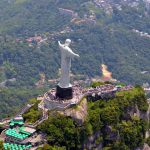Rio, the Marvelous City

A jewel of South America, Rio de Janeiro is fondly called “Cidade Maravilhosa,” Marvelous City by the Cariocas, Rio’s residents. It is a highlight of South America cruises and grand voyages in the region, such as Holland America’s Amsterdam 2020 Grand World Voyage. And no wonder — it is a dazzling city of marvels. The fabled beaches of Copacabana and Ipanema, Sugarloaf and Corcovado Mountains, or Guanabara Bay surrounded by green hills as majestic as a samba are any cruise passenger’s dream.
Christ the Redeemer Statue
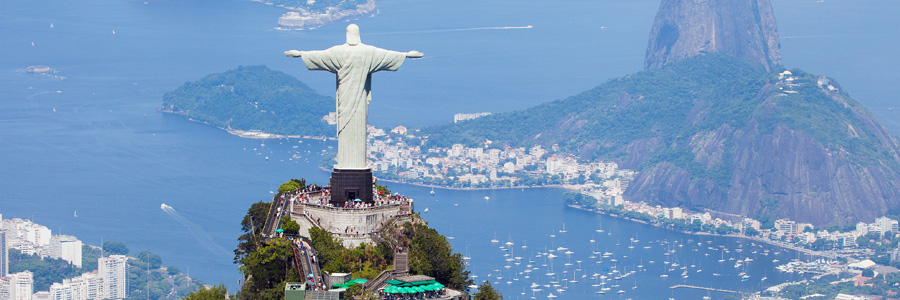
On vacations to Rio, my husband Humberto and I have visited Corcovado Mountain, in the Tijuca National Forest, where one can find the city’s most beloved icon, its most famous “marvel,” the Christ the Redeemer statue crowning the summit of the mount. Ships offer a variety of tours that feature points of interest of the city with rides to the statue via a 115-year-old cogwheel tram. After the tram, visitors ascend 200 steps to the statue, or one can opt for elevators.
“Cristo Redentor,” as locals call the Christ the Redeemer Statue, is one of the New Seven Wonders of the World. In Art Deco style, it depicts Jesus Christ with outstretched arms as if to embrace and protect the city below. The statue’s arms stretch 92-feet wide, with the statue measuring 98-feet high, not counting its 26-foot-high pedestal that houses a chapel in honor of the Lady of Aparecida, the patron saint of Brazil.
Created by French sculptor Paul Landowski, it was built by Brazilian engineer Heitor da Silva Costa along with French engineer Albert Caquot. A Romanian sculptor, Gheorghe Leonida sculpted its face. Built of reinforced concrete and soapstone, the statue weighs 635 metric tons and it was constructed between 1922 and 1931.
It is a symbol of Christianity, but whether one is religious or not, the 360-degree view of Rio from the statue’s platform on a clear day, 2,310 feet high, is simply spectacular: Sugarloaf Mountain, beaches, high rises, upscale neighborhoods, shantytowns — the “Marvelous City” beheld from a marvelous vantage point.
Copacabana Beach
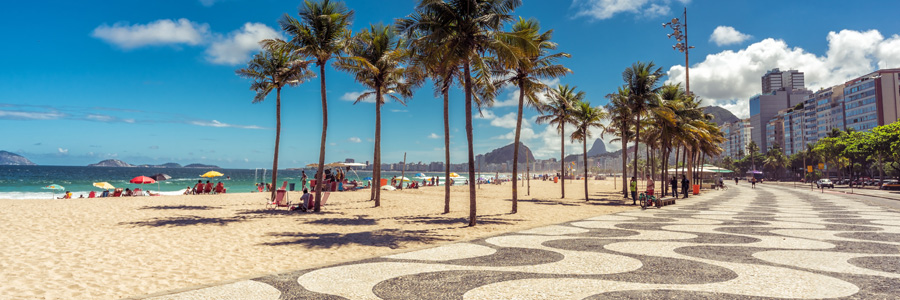
Since we had an overnight stay during our most recent visit to Rio, we decided to book a room at the Hilton Copacabana Beach, which is across the street from its namesake. Copacabana, Leblon and Ipanema are arguably the world’s most famous trio of beaches — with spectacular views of Sugarloaf and Two Brothers Mountains. We spent part of the day sharing the sands with visitors and locals alike. We promenaded Copacabana’s famous tiled sidewalks, sipped caipirinhas (a local cocktail of cachaça, sugar and lime) and enjoyed feijoada (a bean stew with beef and pork) at bars and restaurants near the beach.
On board the Amsterdam, before our visit, many activities and enrichment programs added to our appreciation of Rio. There were samba lessons, with songs such as “Brazil,” “The Girl from Ipanema,” “Copacabana” and other Brazilian tunes playing in the lounges. Dishes such as feijoada and bacalhau (cod) and other local entrées appeared on the menu. Guests heard lectures on the Main Stage about the “Marvelous City” and its history.
Buenos Aires
The capital of Argentina, Buenos Aires (meaning “good airs” in Spanish) was another jewel we visited during the 2020 World Cruise. Located on the western shore of the Rio de la Plata (Plate River), 150 miles from the Atlantic Ocean, it is a class act, a fine port of call with good sights, food and culture.
The 9th of July Avenue
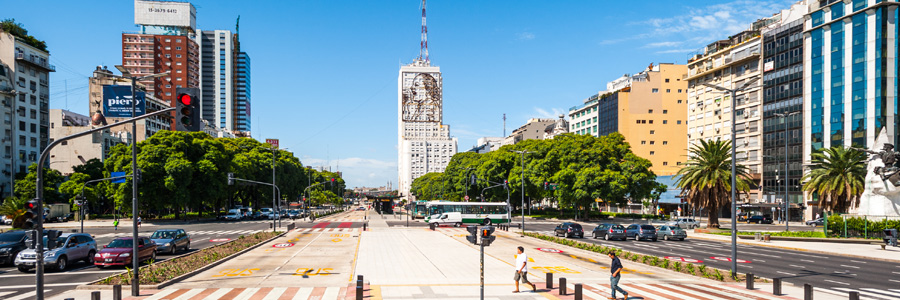
First-time visitors should arrange to see the city’s major highlight: the 9th of July Avenue, named in honor of Argentina’s Independence Day, July 9, 1816. A must-see during our own vacations, this avenue, a bit over a half-mile long, is often called “the world’s widest boulevard,” as it is 16 lanes wide in some places.
It is crowned with an impressive obelisk at the intersection with Corrientes Avenue. The obelisk, erected in 1936, celebrated the 400th anniversary of the landing of conquistador Pedro de Mendoza. On 9th of July Avenue, another highlight is the Teatro Colón — named for Christopher Columbus and one of the world’s best and most elegant opera houses and a great source of pride for “porteños” (residents of the port) as the inhabitants of Buenos Aires call themselves.
Plaza de Mayo
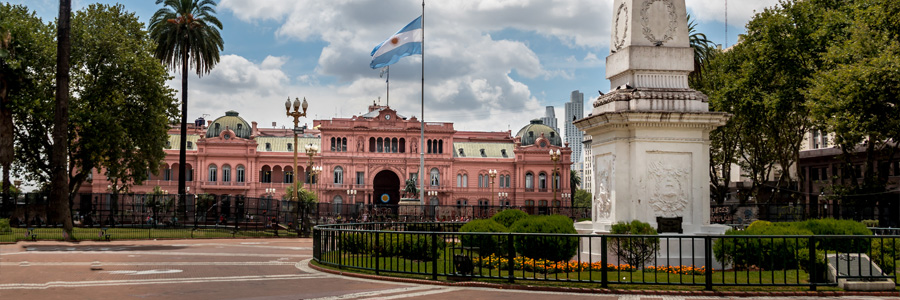
Four blocks from the obelisk is the Plaza de Mayo, in the heart of Buenos Aires, with the Casa Rosada or Pink House (Argentina’s White House) from whose balcony President Juan Peron and the beloved First Lady of Argentina Eva Peron often addressed the multitudes of their followers in the early 1950s. It reminds me of Madonna singing “Don’t Cry for Me, Argentina” in the 1996 movie “Evita.”
In the Plaza de Mayo, visitors can also find the Metropolitan Cathedral and the Cabildo or City Hall, both built during the second half of the 18thcentury, a time of Spanish colonial rule. Just a few blocks from the Plaza de Mayo, on Avenida de Mayo, is Café Tortoni, one of Buenos Aires most traditional cafes, where some of the most popular treats include “chocolate con churros” (hot chocolate with a fried dough pastry), Viennese coffee, croissants and a variety of sandwiches — yum!
Other must-sees include the tomb of Eva Peron in the Recoleta Cemetery, of the posh Recoleta neighborhood. Whenever I visit the cemetery, which has more than 6,400 ornate mausoleums of Argentina’s presidents and other notable people, I simply ask one of the guards for “Evita,” and he typically beams and walks me through the paths lined with splendid statues and tombs right to her grave. She lies in a crypt, 16-feet deep, to ensure one of the country’s most popular and controversial figures is not disturbed.
I try never to leave Buenos Aires without a visit to San Telmo, a “Barrio Sur” south of the Plaza de Mayo, the city’s oldest district. This includes a stop at the colorful Caminito Street in La Boca neighborhood, a picturesque area at the mouth of the Riachuelo River. Here is where the city’s first settlers lived and at present it is an artists’ colony. This area, famous from the tango, “Caminito,” has wooden buildings painted in bright colors, many wonderful Italian restaurants and street entertainers including musicians and yes, of course, tango dancers.
Learn more about South American cruises here.



